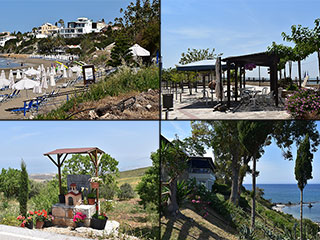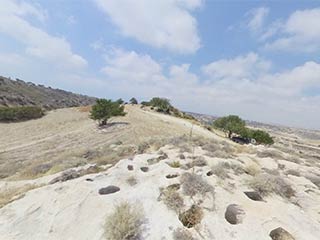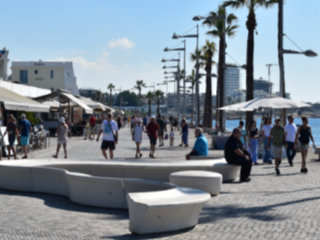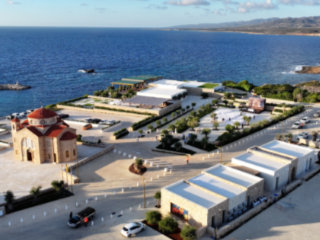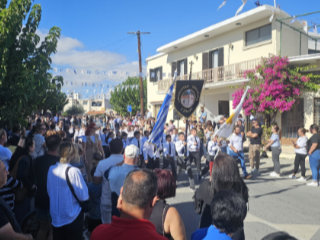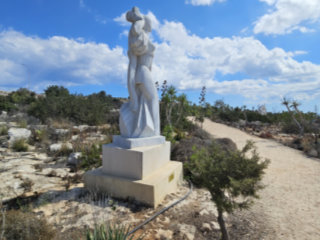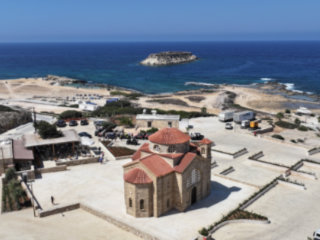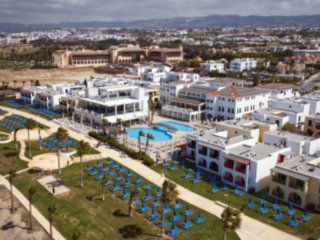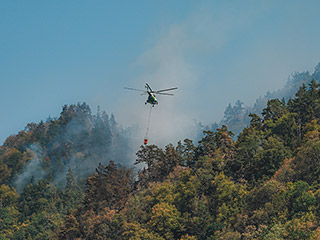Souskiou Cemetery
Another Day
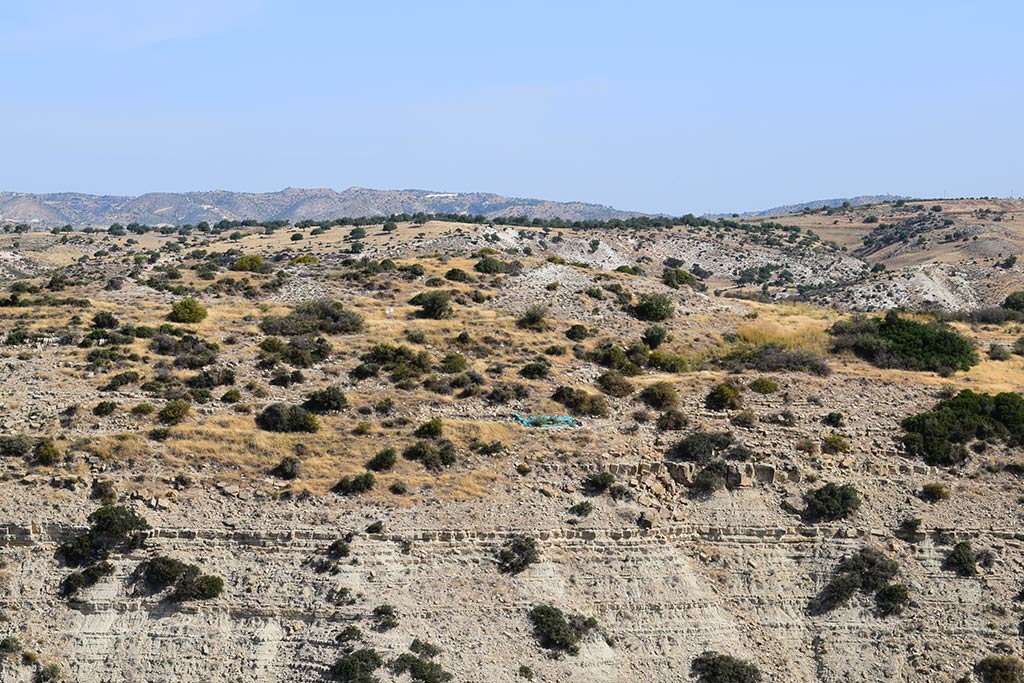
On our next visit, we decided first to visit Vathyrkakas Cemetery, which was on the other side of the canyon. From there, we could see the hill I had been standing on before. Below that, you can just make out some green tarpaulin. That has been put there to protect whatever was being excavated. We will visit there later.

Vathyrkakas Cemetery
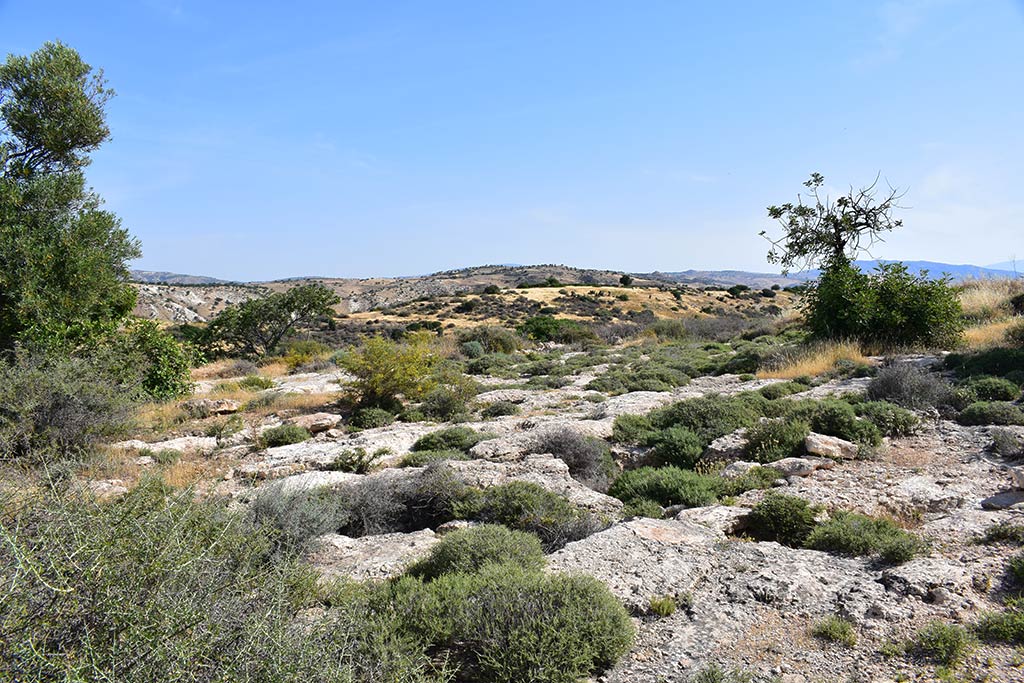
This cemetery is slightly different. There are a lot of bigger chambers here compared to the round pits on the opposite side of the canyon.
This is what the official website has to say:
Souskiou-Vathyrkakas... ...is widely acknowledged as a remarkable pre-Bronze Age necropolis. The site substantially pre-dates the time when cemeteries regularly served as venues for burial on the island, in the Bronze Age and later. Its tombs are typically deep, bell-shaped shafts, whereas contemporary graves at other sites are shallow pits. Its fame rests especially on the abundance and quality of objects allegedly looted from the site and now in private collections. They include remarkable cruciform figurines, the ideological hallmark of the Erimi culture, and outstanding works such as a stone sculpture in the J. Paul Getty Museum and a seated ceramic figure in the Pierides Collection.
Big Tombs
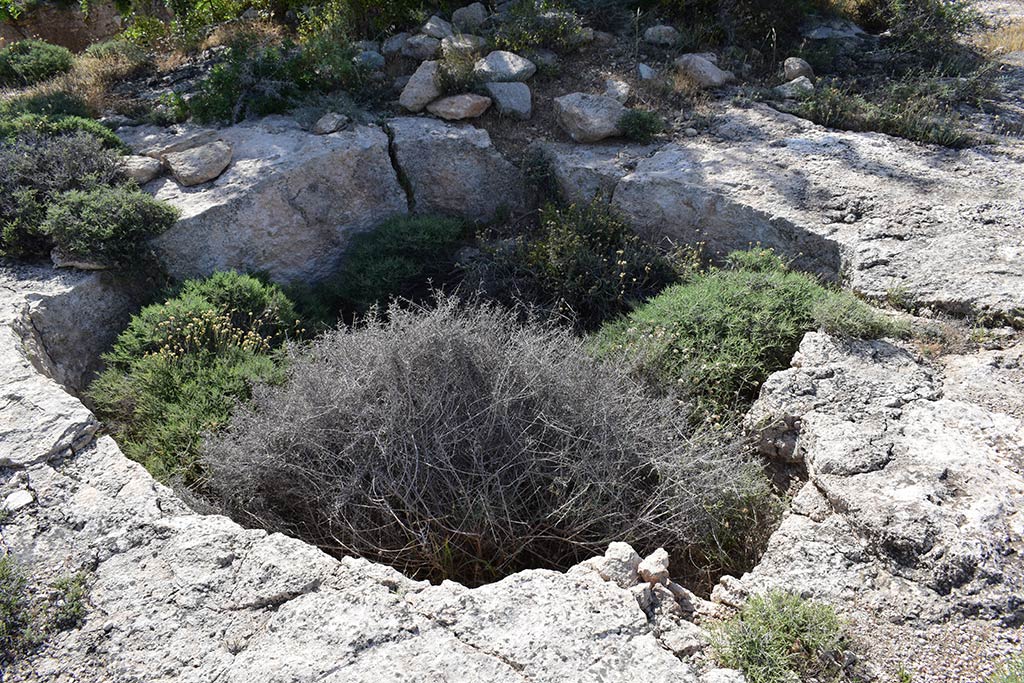
More from the same website:
The four expeditions investigated what we can now see as a 30 x 60m area of a linear cemetery known as Souskiou-Vathyrkakas Cemetery 1. Tombs cluster unevenly in a c.30m wide funerary zone along the southern lip of the ravine, opposite the contemporary settlement on other side of a stream. It may be part of a larger cemetery comprised of a number of foci. The excavated portion of Cemetery 1 comprises some 100 rock-cut features in a c. 1800 m2 exposure, but it is important to appreciate the varied chronology and purposes of human activities at the locale.
In terms of Cypriot funerary practices, the chief innovations at Vathyrkakas are the existence of a cemetery, more spacious facilities for a multiple inhumation burial system, the elaboration of tomb types, and the disposal of objects as part of the funerary rituals. These mark a considerable break with preceding and succeeding customs, one that the current project seeks to understand. Within the spectrum of tomb types, there is one that stands out as truly exceptional.
Nature At Work
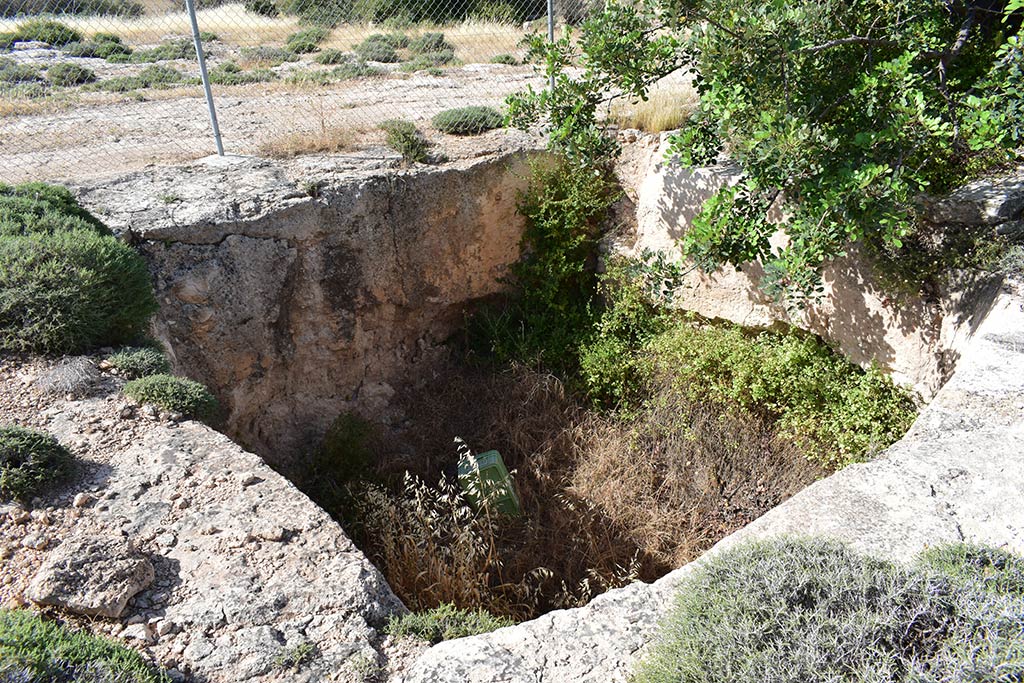
So if all this was cleared of vegation during the 2011 excavations, we have an idea of how soon nature can reclaim her territory. There is more information on the website which I won't repeat here. If you are interested it will give you plenty of information.
Tomb 73?
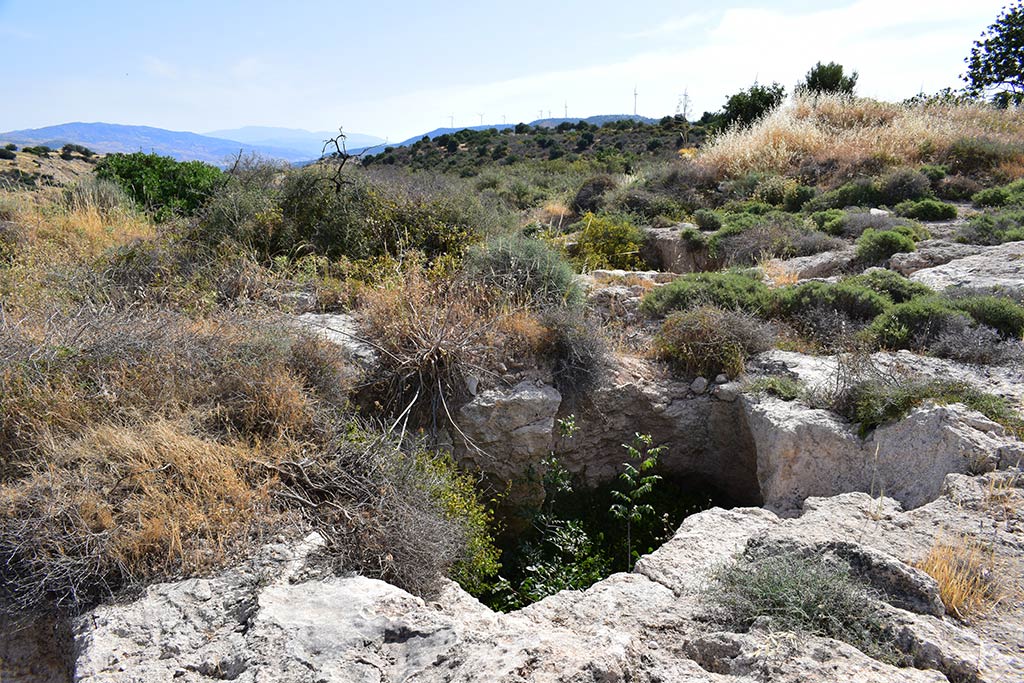
I wonder which of the tombs here was the tomb referred to as Tomb 73 in the article quoted above? It is hard to tell from the photograph shown on the website.
Page 5 of 10


Related Blogs:
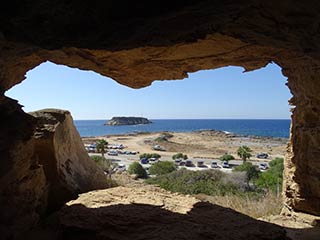
Cape Drepanum
It's time for another guest blog from Max. This time, he's been to the edge of the Akamas, to have a look at some of the caves at Cape Drepanum. Over to you, Max...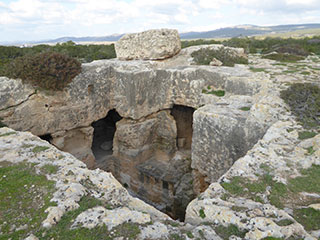
The Necropolis at Meletis Forest
If you drive to the Akamas along the coastal road, you will eventually come off the main road and onto a side road leading to the Akamas proper. Before you go past the Searays cafe bar, you will see a nondescript sign on your right, next to a layby.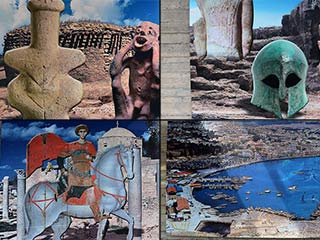
The History of Paphos in 16 Pictures
When I was out photographing a new statue in Old Paphos the other week, I stumbled upon a walkway I hadn't seen before. It descended to the lower carpark, by the Turkish Baths. The walkway was adorned with pictures telling the story of Paphos through the ages. Judging by the state of some of the pictures. they had obviously been there for some time, but this was the first I had seen of them. Here they are for your perusal...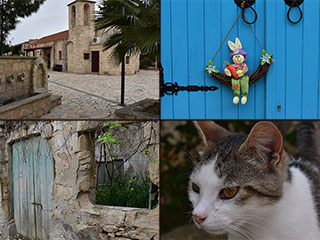
Pano Arodes
Pano Arodes is one of the gateways to the Akamas. It is a charming village between Kathikas and Droushia. We will be featuring it in our next eBook, so recently visited it to do some research. Naturally enough, we took lots of pictures while we were there...Good Pages To Visit
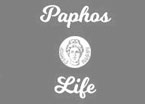
FB PagePaphos Life on Facebook
Like us on Facebook and stay notified of new blog posts.

FB PageOur Facebook Chat Group
Paphos Chat has been created for people who like our site and want to chat using Facebook. You can also easily upload photos of any size here. A lot of people are members of the Facebook chat group and the main forum. It's entirely up to you.
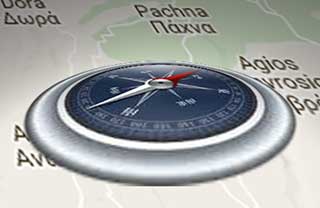
ListBlog Locations
Planning a day out? Then use our map of blog locations as a handy guide. Some of the places we visit our closer to each other than you might think, so take a look and start planning your next adventure...
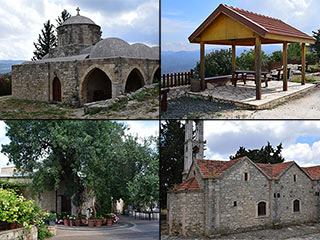
eBookCyprus Road Trip 01: the Kathikas - Panagia Loop
Let me take you on a journey around the region of Paphos, Cyprus. Starting at Paphos itself, we travel to Akoursos, then Kathikas, Kritou Terra and Simou. We continue past Lasa and Kannaviou, before taking in the delights of Panagia. Getting a bit more adventurous, we visit the abandoned villages of Statos and Agios Fotios, before passing through Choulou, Letymbou and Polemi, and rejoining the main Paphos - Polis road.
The route is suitable for all types of vehicle, and requires no off-roading. The guide contains about 130 photographs including shots of all the road signs you need to pay attention to, as well as some of the highlights you may experience along the way.
There are also several maps which will help you keep your bearings.
You can do this journey in a day, or you can break it up into chunks. You can also do it in reverse, to get some completely different views. It is entirely up to you.
